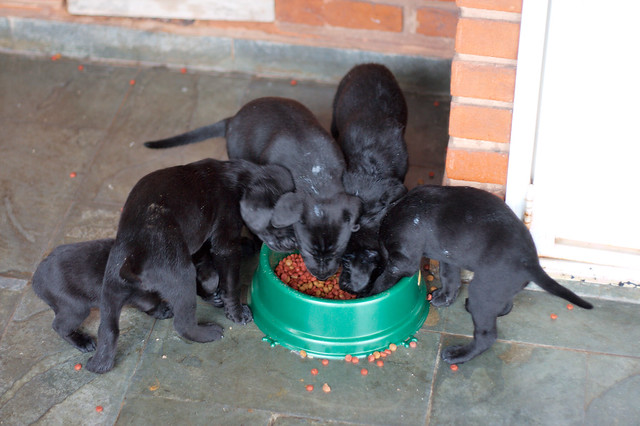 |
| Chihuahua puppy (Photo credit: Wikipedia) |
Training puppies too early can be difficult. But, if you do not train him early, he will very quickly have the run of the house.
Training puppies are necessary because it saves you trouble later. Most dog owners skip this because we all know that dog training takes some effort. If you could teach a puppy in a month, you would be happy. But training a dog well is a longer task. Just because your dog looks cute as a puppy do not let this deter you from training him early.
In training puppies, there are some do’s and don’ts.
Do
Provide the puppy with consistent access to the toilet area. If you are training your puppy at home take him to his toilet area every 45 minutes or so. If you are not at home make sure you help your puppy make a few ‘mistakes’ as possible, by giving him a puppy friendly environment.
Every time your puppy does something ‘good’, give him a reward. If he eliminates his waste in the toilet area, praise him and give him a treat. He will then recognize that his actions were right and aim for more because of the reward he will get. Make sure your rewards immediately follow the good action.
Feed your puppy just like you feed yourself. If you eat regularly, set aside food for him. It is important to train your puppy the right time to eat. This will prevent him from begging for food from your plates.
Be patient in training your puppies. Relapses will take place, but patience and perseverance are key. Remember your dog wants nothing more than to please you. After he is fully trained and it will be worth the while.
Don’t
Shout at your puppy when he makes mistakes. Especially when dogs are young as this can cause frights that can stay with the dog as it gets older.
When house training your dog, don’t leave water and food out all the time. If he drinks a lot, he will urinate more frequently. You will have to allow for more mistakes to be made.
Always watch the actions of your puppy and reinforce the good behavior many times throughout the day. It is not proper to let him run around as if he owns the house. If he does so, he will carry that attitude until he grows up.
Remembering some of these simple tips can make your puppy a better-trained dog and a more enjoyable pet.


















